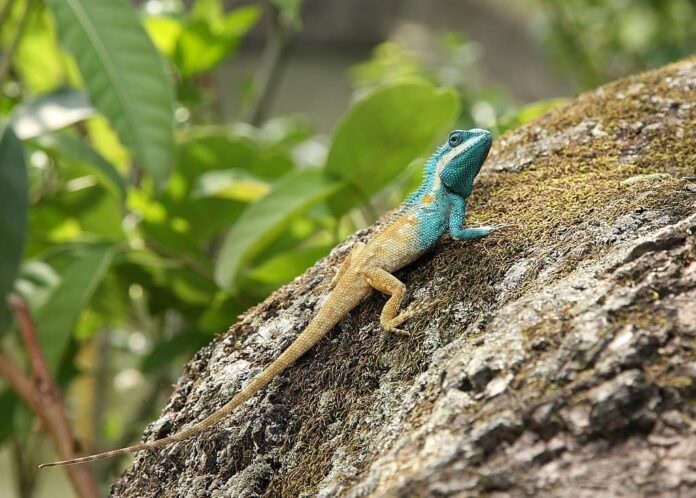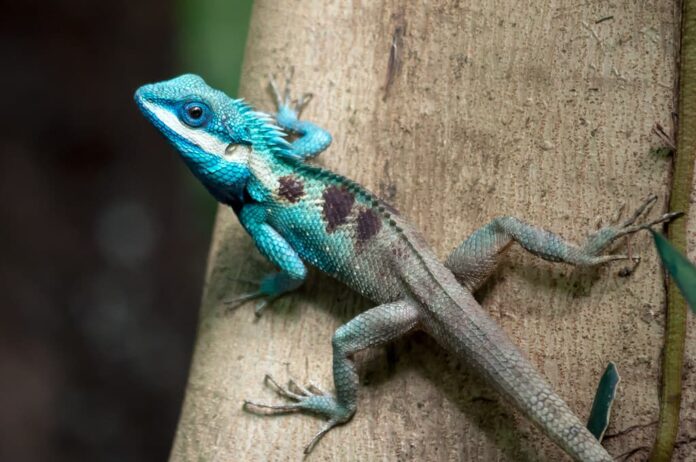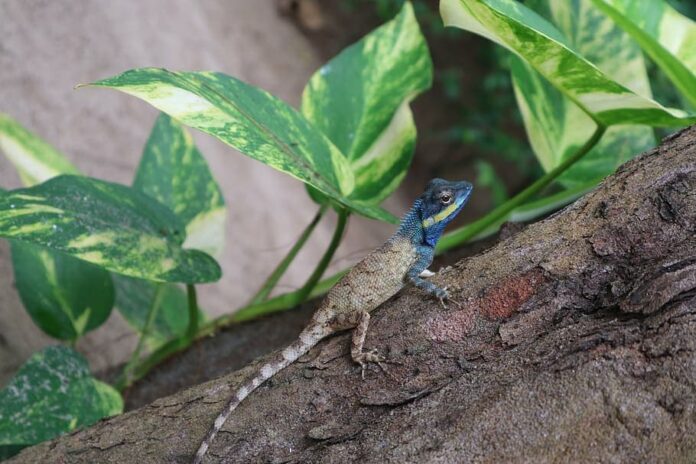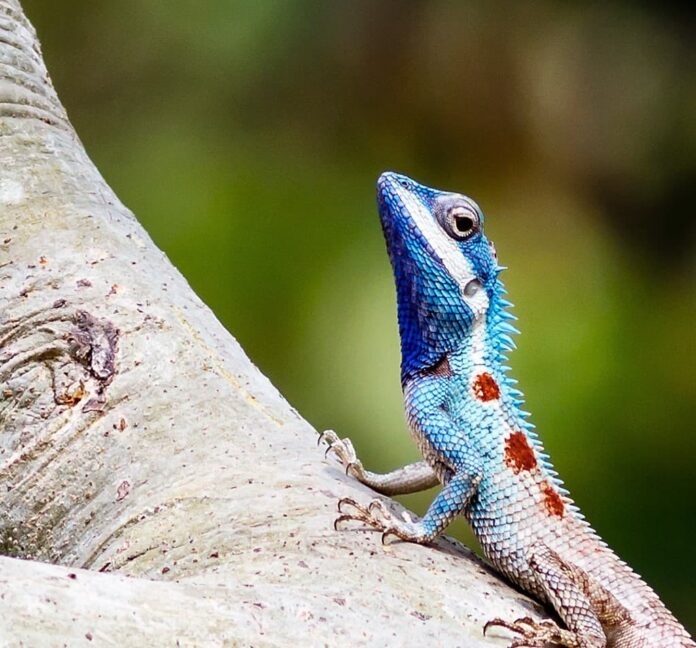Looking extremely majestic, the blue-crested lizard is one of the most colorful and fascinating lizards. Coming across one of them would be a great sight to see, that blue color is everything. For those who like lizards, the blue-crested lizard is definitely the animal that you should not miss. Let’s find out more about this forest dragon below.
1Appearance

A blue crested lizard often grows to about 28 centimeters long but some bigger ones can be up to 42 centimeters. The most interesting and visible parts of their bodies are the scales on the middle part of their bodies. There are between 45 to 53 scales, running from the bottom part of the head across the back. On each side of the head of the blue-crested lizards are a few small spines above their tympanum.
When it comes to the appearance, its coloration says it all. A blue-crested lizard has a bright blue or turquoise head, throat, and some other parts of the body. If you see these lizards in this coloration, that means they are in their breeding season. Outside the breeding season, they are mainly grayish brown to reddish brown only. Regardless of the season; however, there are 3 large reddish brown blotches on their upper flanks. One more thing, this lizard has a broad pale stripe under each of its eyes that extends from near the snout to the shoulder.
This lizard species has a large head with swollen cheeks, and males have a well-developed throat pouch. That is how you can tell the difference between the male and female of these lizards. They extend this pouch and perform a raid series of push-ups when they try to attract a female. At the same time, they also do the same thing when they are in conflict with another male.
2Behavior

Blue crested lizards are diurnal and fully arboreal, spending most of their time in the trees. This also means they do not come to the ground as much at all. These mini dragons are also solitary so they only come together during the breeding season. Blue crested lizards are neither dangerous nor venomous though they do bite when handled. The bite can be quite painful, so make sure to not approach and try to catch them when you see one. On top of that, they can change their color when they want to ward off a sudden threat. Their colors become more and more vivid while strongly erecting their crest and fully distending their pouches.
3Feeding & Habitat

Not different from other lizard species, this one is also carnivorous with a preference for insects and invertebrates. Normally, they feed on beetles, crickets, grasshoppers, moths, and other bugs that they can find. The distribution of blue crested lizards is in China, South Asia, and Southeast Asia. Across their range, they inhabit lowland and lower montane forests as well forest edges, gardens, and parks.
Related Post: Carnivorous Lizards With Forked Tongues





